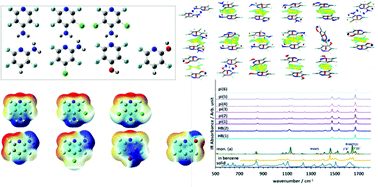The article with participation of NIOCh's researchers is published in Physical Chemistry Chemical Physics, (IF 3,945)
How do electron donating substituents affect the electronic structure, molecular topology, vibrational properties and intra- and intermolecular interactions of polyhalogenated pyridines?
Enrico Benassi, Tamara Vaganova, Evgenij Malykhin and Haiyan FanPhys. Chem. Chem. Phys., 2022, 24(6), 4002-4021,
First published on 19 Jan 2022
doi: 10.1039/D1CP05956D

Abstract
Seven polyhalogenated pyridine derivatives bearing an amino or a hydroxyl group, either at the ortho or para position, were studied using a combined experimental and computational approach. The presence of an electron donating substituent strongly impacted on the geometry, electronic structure, electrostatic properties, molecular topology and vibrational characteristics of these compounds compared to the corresponding polyhalogenated pyridines. In particular the attention was focused on changes in wavenumbers, force constants and intensity of the seven in-plane Ring Normal Modes (RNMs). Due to the nature and position of the substituents, intra- and intermolecular interactions also underwent dramatic modifications, as revealed using Natural Bond Orbital (NBO) analysis, Non-Covalent Interaction (NCI) analysis and Atom-In-Molecule (AIM) theory. Raman and FT-IR spectra of these seven compounds were also collected in solid phase and rationalised by the simulated spectra for hydrogen bonding and/or π–π stacking based homodimers. The present study provides a strategy not only for the vibrational characterisation for the individual compounds, but also for shedding light on the ways of molecular packing in the molecular crystals or cocrystals involving these compounds.
Альметрики:


